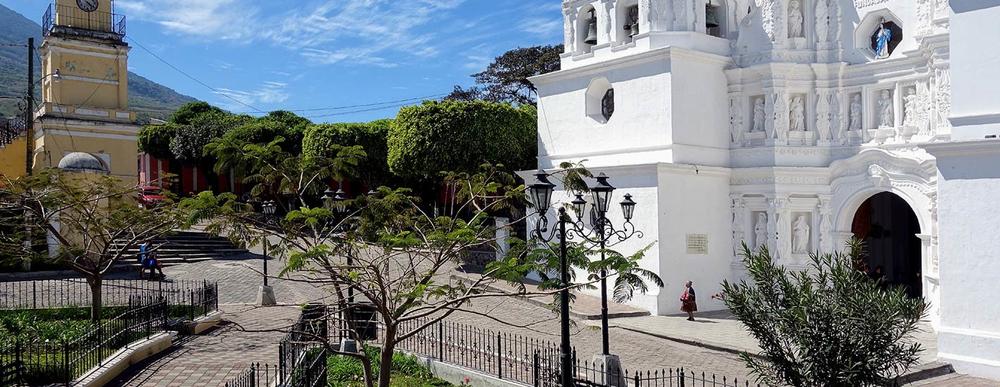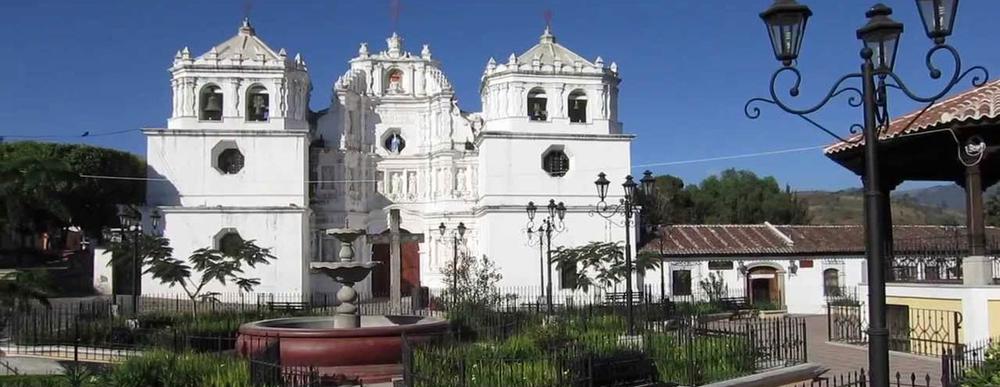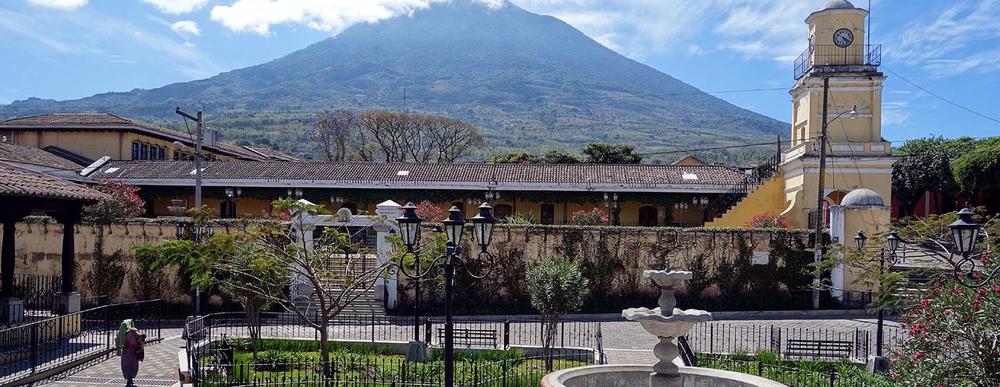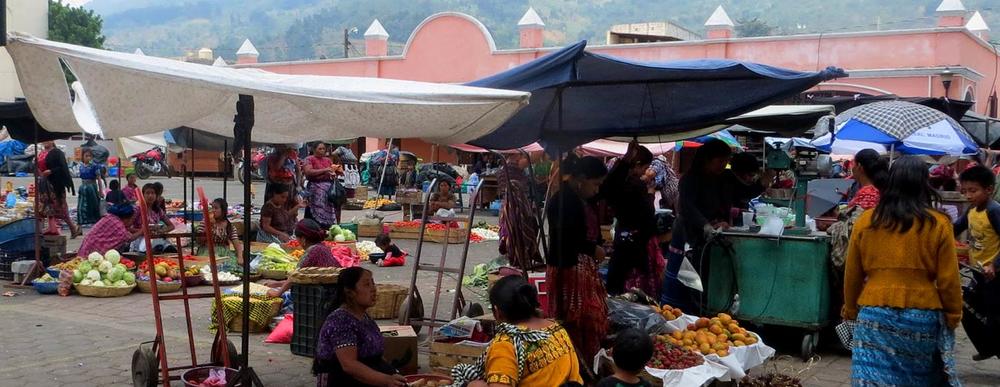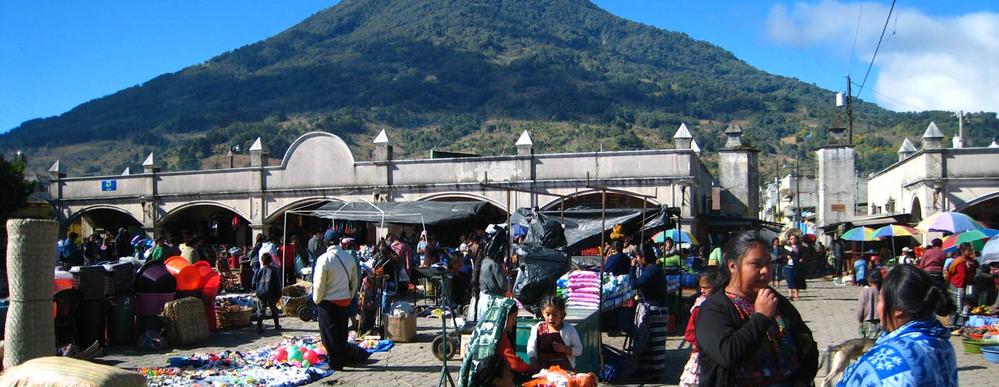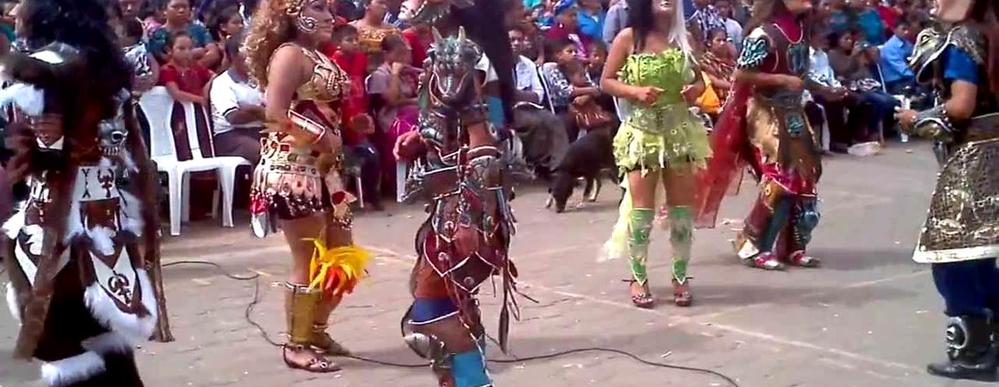Posted on Feb 08, 2019 |
Fourth post on villages around Antigua Guatemala, In this series of articles, we will talk about two villages per week. For this fourth article we’ll include two towns, Santa Maria de Jesus and the well known Ciudad Vieja, which has a one or two interesting things to learn about.
Ciudad Vieja (Santiago de Guatemala)
Ciudad Vieja is the old capital of Guatemala, founded in the Almolonga Valley, but it is important to take into account interesting facts in the history of this ancient capital of Guatemala. On November 22, 1527 (same date of the feast of Santa Cecilia by the Catholic Church) the City of Santiago de Los Caballeros de Guatemala was founded by Jorge de Alvarado (brother of Don Pedro de Alvarado, conqueror of Guatemala) in the Almolonga valley (known also as Quinicilapán Valley) at the base of Agua volcano.

The new city was governed by Beatriz De La Cueva, who had arrived from Spain a few years before. Some time after the founding of the Capital of Guatemala, in 1541 Guatemala suffered very heavy rains for many continuous days, the crater of the volcano filled with rain-water and due to this great pressure, the crater broke in its border to produce a gigantic avalanche that directly descended to the city, destroying it.
After the natural disaster, the survivors of the city moved to the next town, built for workers' citizens, this town prospered and it is known today as "Ciudad Vieja". Originally, however the actual capital Santiago de los Caballeros de Guatemala (in the Almolonga Valley) was located at what we know today as Barrio de San Miguel Escobar.
After the destruction of the city, the survivors decided to build a new capital further away from the volcano, the interim governors Bishop Francisco Marroquin and Don Francisco de la Cueva agreed to locate the new city in the Panchoy Valley, and thus the new city of Santiago de Guatemala was founded (today Antigua Guatemala).

Because of the history and roots of this city, it does not have cultural principles, especially considering that the inhabitants of today are 97% Ladinos, who have acquired other customs, also influenced by tourism and foreigners who have arrived in Ciudad Vieja. to live.
The city’s patronal feast is celebrated every December 8th in honor of the "Santisima Virgen de Concepción"; like other villages around Antigua Guatemala, this festival has dances, serentas, musical concerts and fireworks taking place at the central square (central park). During Holy Week, visitors to the city witness multiple religious activities, something that the inhabitants are proud of.
Santa Maria de Jesus
This village has a cold climate, known for its folkloric dances such as the "toritom, the flowers, the monkeys and the deer" that take place every 15th of January when its patronal feast is celebrated to honor Virgen María.
It is located in the first third of the Agua volcano, at a height higher than the rest of the nearby villages. Due to the richness of its land, this territory is very agricultural, with corn plantations and many fruit trees, due to this, the inhabitants have left a series of trails that mark the landscape of the volcano. From this town there are many roads to ascend to the crater of the Agua volcano.
In addition to the agricultural aspect, the village has a lot of commercial activity thanks to tourism. The inhabitants work hard in crafts for sale, as well as many products in wood, from furniture to kitchen utensils.

This town was originally formed by Cakchiquel indigenous from Quetzaltenango, who lived in the vicinity of the Santa Maria Volcano, which is why the village adopted the name Santa Maria de Jesus. The typical costume of the village is very characteristic of its Cachiquel ethnic group, it is distinguished by a blue colored güipil with light blue stripes and a red cross on the front of the suit, as well as a red sweater. Its inhabitants work organized to promote and maintain their cultural identity, customs and traditions inherited by centuries of history. One of its most notable cultural characteristics is music, in the village you can find several schools of traditional Guatemalan music and are well known for having excellent bands.
The typical food of this village is the PIPIAN, which is a dish well known in Guatemalan culture and that is not missing from the menu of every restaurant in Guatemala. This village is also the starting point for many mountaineers who climb the famous Agua Volcano.
Latest Posts
-
Easter Week 2025 Schedule Processions Antigua Guatemala
- Mar 02, 2025 -
Ten Beautiful Words in the Spanish Language
- Jul 13, 2024 -
Easter Week 2024 in Antigua Guatemala
- Feb 04, 2024
